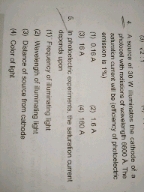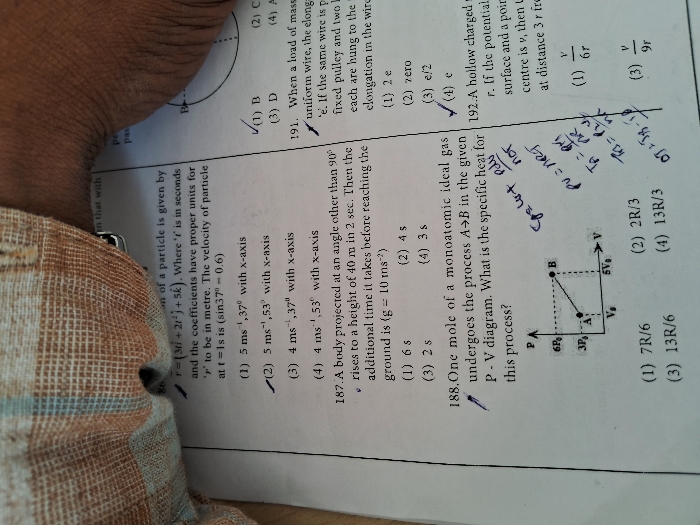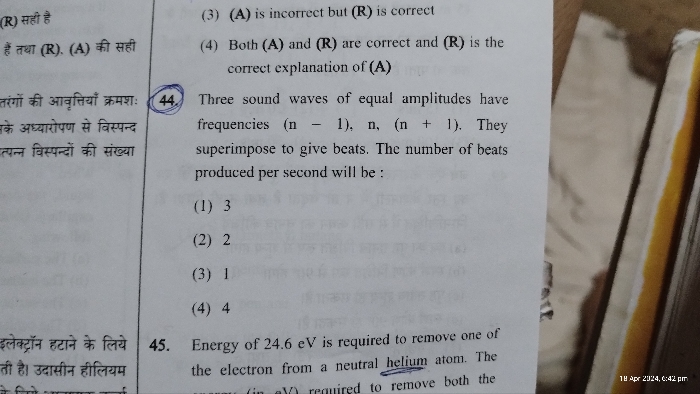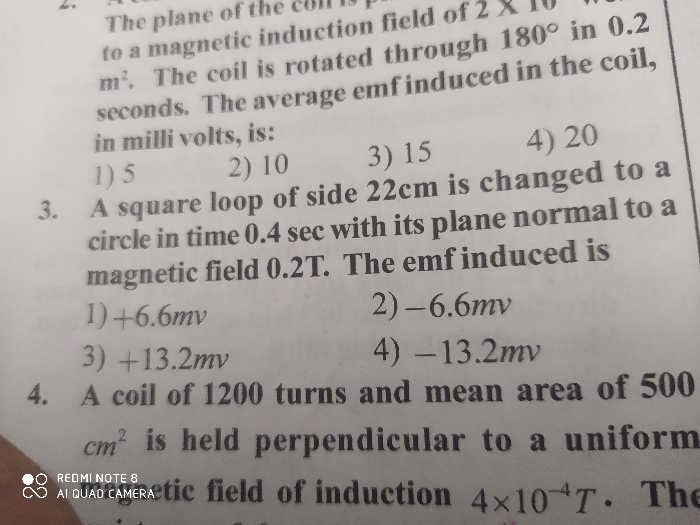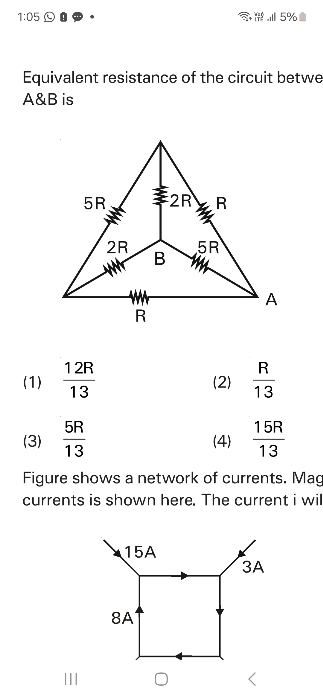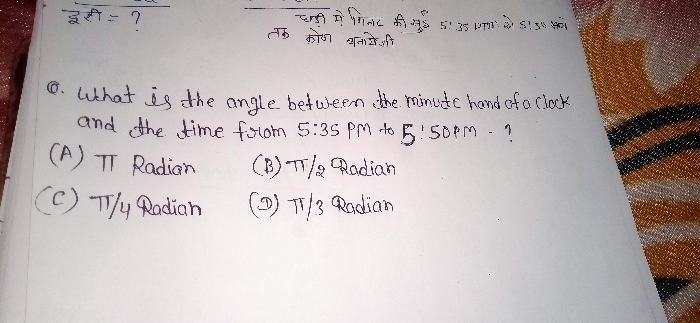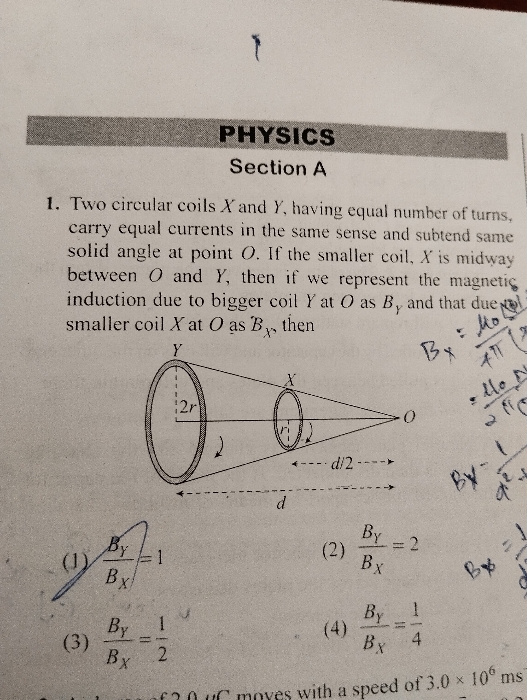NEET Class neet Answered
Please answer this
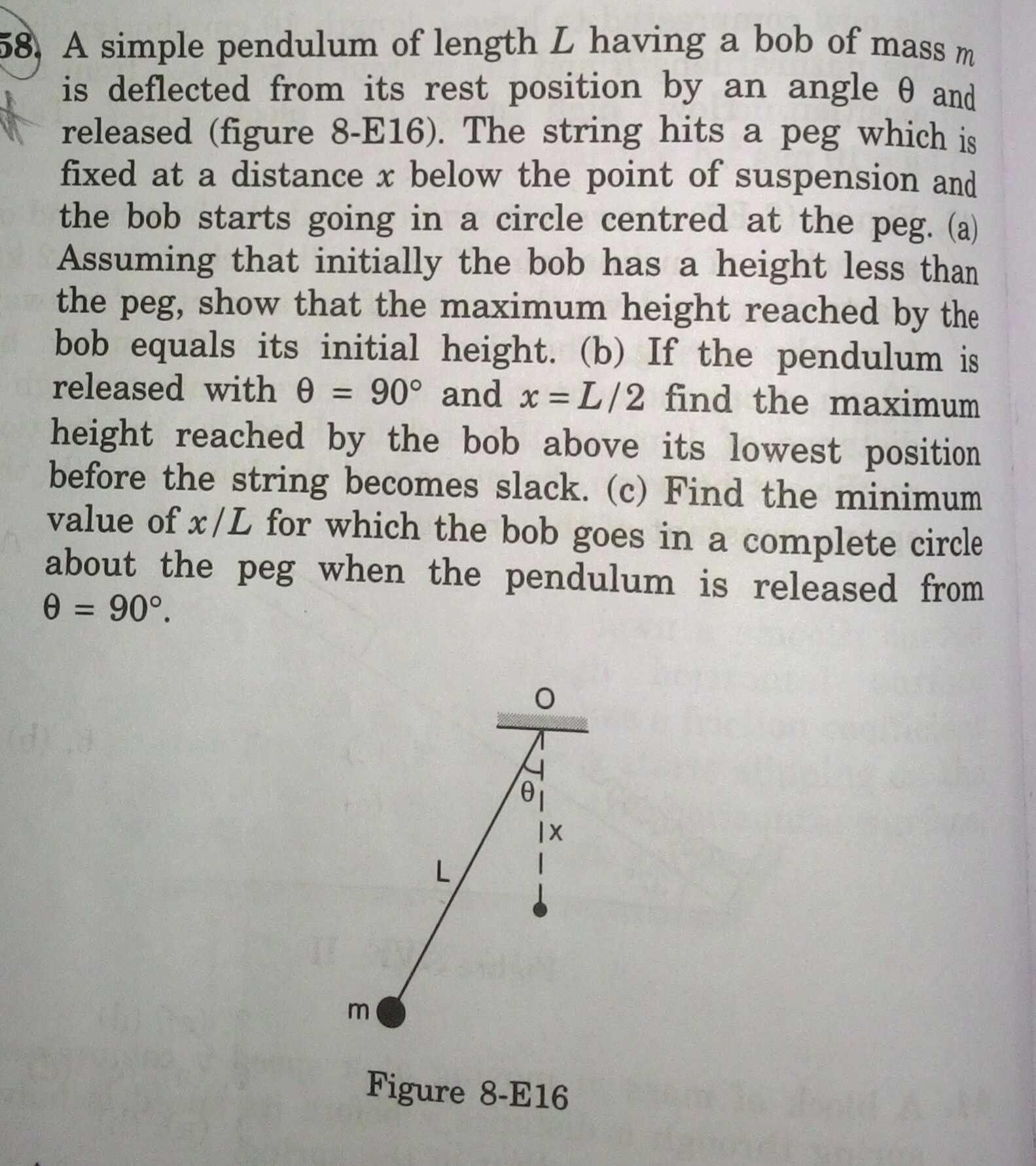
Asked by Prashant DIGHE | 29 Sep, 2019, 09:47: PM
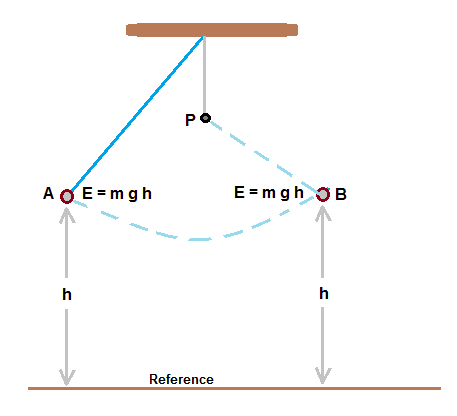
(a) When the bob is released from point A which is at height h (below peg P) on left side of peg,
its potential energy with respect to reference level is E = mgh.
When it swings from left to right, obstructed by peg, then the bob of pendulam moves till the point B ,
where its total energy equals the initial energy E = mgh.
Since kinetic energy of the bob will be zero at maximum height, its total energy equals potential energy mgh .
Hence the bob reaches the same height at right side, as it has started from left side
-------------------------------------
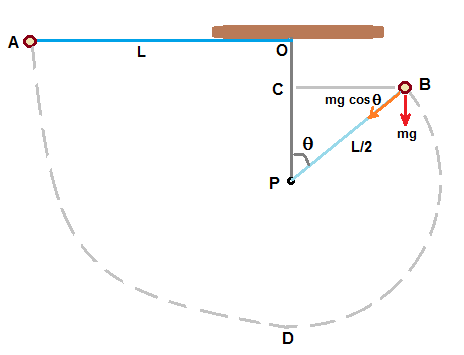
In the second case where peg is at a distance x = L/2 from point of support O and bob of the pendulam
is released at A so that its initial position of the string makes 90° angle with the line OP as shown in figure.
After getting obstruction at peg, the bob moves till the point B. At point B, tension in the string becomes slack.
velocity vB of bob of pendulam at B is obtained by equating its kinetic energy at B to the
potential energy difference between points A and B
(1/2) m VB2 = m g ( OC ) = mg [ (L/2) - (L/2) cosθ ]
where θ is the angle made by the string with line OP , when it reaches the maximum height.
Hence from above equation, we get, vB2 = g L ( 1 - cosθ ) ..........................(1)
since Tension in string is zero at B, centripetal of the circular motion is only due to weight of bob as shown in figure
Hence , we have, [ m vB2 / (L/2) ] = mg cosθ or vB2 = (L/2) g cosθ .....................(2)
By equating eqns.(1) and (2), we get , g L ( 1 - cosθ ) = (L/2) g cosθ , or cosθ = 2/3
Height of poit B from the lowest position D = (L/2) + (L/2)cosθ = (L/2) + (L/2)(2/3) = (L/2) + (L/3) = (5/6)L
---------------------------------------------------------------------------------------
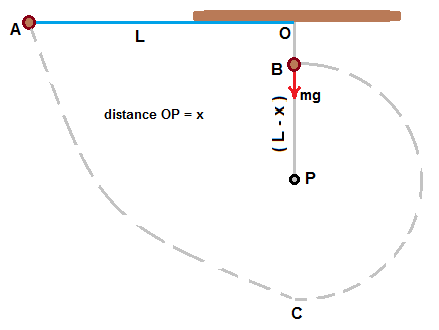
If the bob of pendulam makes complete circle about the peg , when the bob is released at A (releasing angle 90º),
velocity of bob at B is obtained by equating the kinetic energy to the potential energy difference between O and B.
(1/2) m vB2 = m g OB = m g [ x - (L-x) ] = m g ( 2x - L )
Hence, vB2 = 2 g ( 2x - L ) ...........................(1)
Also due to circular motion, m vB2 / ( L - x ) = m g or vB2 = ( L-x )g ..................(2)
By equating (1) and (2), we get, (L-x) = 4 x - 2 L or 5x = 3L or (x/L) = (3/5) = 0.6
Answered by Thiyagarajan K | 01 Oct, 2019, 11:46: AM
Application Videos
NEET neet - Physics
Asked by bidyutpravarout79 | 26 Apr, 2024, 09:40: PM
NEET neet - Physics
Asked by ramanjaneyuluoguru | 25 Apr, 2024, 04:18: PM
NEET neet - Physics
Asked by shatakshibhatt9 | 20 Apr, 2024, 07:52: PM
NEET neet - Physics
Asked by praveenpriya000079 | 18 Apr, 2024, 07:24: AM
NEET neet - Physics
Asked by gouranshi84 | 17 Apr, 2024, 05:23: PM
NEET neet - Physics
Asked by sojusvi | 17 Apr, 2024, 01:12: PM


